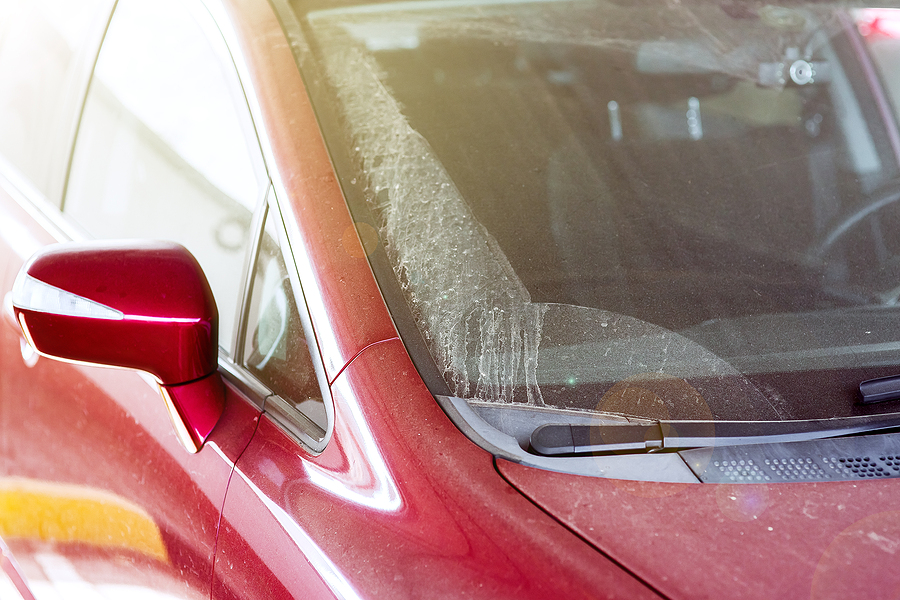As a passionate car enthusiast, I understand the agony of unsightly sticker residue that mars your windshield’s pristine surface. Once a cheerful decoration, these stubborn remnants become an eyesore, detracting from the aesthetic appeal of your vehicle. Determined to reclaim my windshield’s immaculate shine, I embarked on a quest to find the most effective solution to this common automotive dilemma.

Image: www.smileysglass.com
Deciphering Sticker Residue
Sticker residue, an adhesive residue left behind after a sticker is removed, is a pesky substance that adheres stubbornly to various surfaces, including car windshields. Understanding its composition allows us to devise strategic removal techniques:
- Paper Stickers: Comprised mainly of cellulose fibers bonded with adhesives like polyvinyl acetate (PVA).
- Vinyl Stickers: Made of durable plastic polymers bonded with strong adhesives like acrylics.
- Adhesives Only: Sticky remnants of double-sided tape or other adhesive applications.
Unveiling the Arsenal: Time-Tested Methods
Armed with an arsenal of tried-and-true techniques, we unravel the secrets of effectively banishing sticker residue from your car windshield:
- Heat Treatment: Apply gentle heat with a hair dryer or heat gun to soften the adhesive, making it easier to remove.
- Rubbing Alcohol: Isopropyl alcohol acts as an efficient solvent, dissolving and lifting the adhesive bond.
- WD-40: This versatile lubricant penetrates and loosens the adhesive, enabling its effortless removal.
- Essential Oils: Lavender, tea tree, or orange essential oils possess solvent properties that dissolve and remove residue.
- Citrus Cleaners: Products containing citric acid, such as orange or lemon juice, effectively break down adhesives.
Expert Insight: Unlocking the Secrets
To enhance our understanding, we sought the wisdom of seasoned detailing professionals and automotive enthusiasts. Here’s what they revealed:
- Start Slowly: Begin with the least abrasive methods, such as heat or essential oils, gradually escalating to more aggressive solutions if needed.
- Test in an Inconspicuous Area: Always test any solution on an inconspicuous area before applying it to the entire windshield.
- Patience is Key: Removing sticker residue requires patience and persistence. Allow each solution ample time to penetrate and soften the adhesive.
- Avoid Razor Blades: Never use sharp objects like razor blades or knives, as they can scratch or damage the windshield.
- Protect Surrounding Areas: Cover surrounding paint or trim with masking tape or a cloth to prevent accidental damage.

Image: www.loveourreallife.com
FAQs: Demystifying Sticker Residue
- Can I use acetone to remove sticker residue? Acetone is a powerful solvent that can damage the windshield’s surface; it’s best to avoid using it.
- What is the best way to remove sticker residue from a paper sticker? Heat is the ideal choice for paper stickers. Use a hair dryer or heat gun to soften the adhesive before scraping it off gently.
- How do I prevent sticker residue from forming? Applying a sealant or wax to the windshield before applying stickers can create a barrier, making residue removal easier.
- What safety precautions should I take when removing sticker residue? Wear gloves and eye protection when using chemical solutions to avoid skin irritation or eye damage.
How To Remove Sticker Residue From Car Windshield
Conclusion: Restoring Windshield Clarity
With the right techniques and expert guidance, you can effortlessly eradicate sticker residue from your car windshield, restoring its pristine clarity and enhancing your driving experience. Armed with the knowledge and solutions outlined in this comprehensive guide, you can confidently tackle this common automotive challenge, ensuring a gleaming, sticker-free windshield that complements the beauty of your vehicle.
If this article has been enlightening and you’re interested in learning more about the topic, we encourage you to leave a comment below or explore our other insightful blog posts.